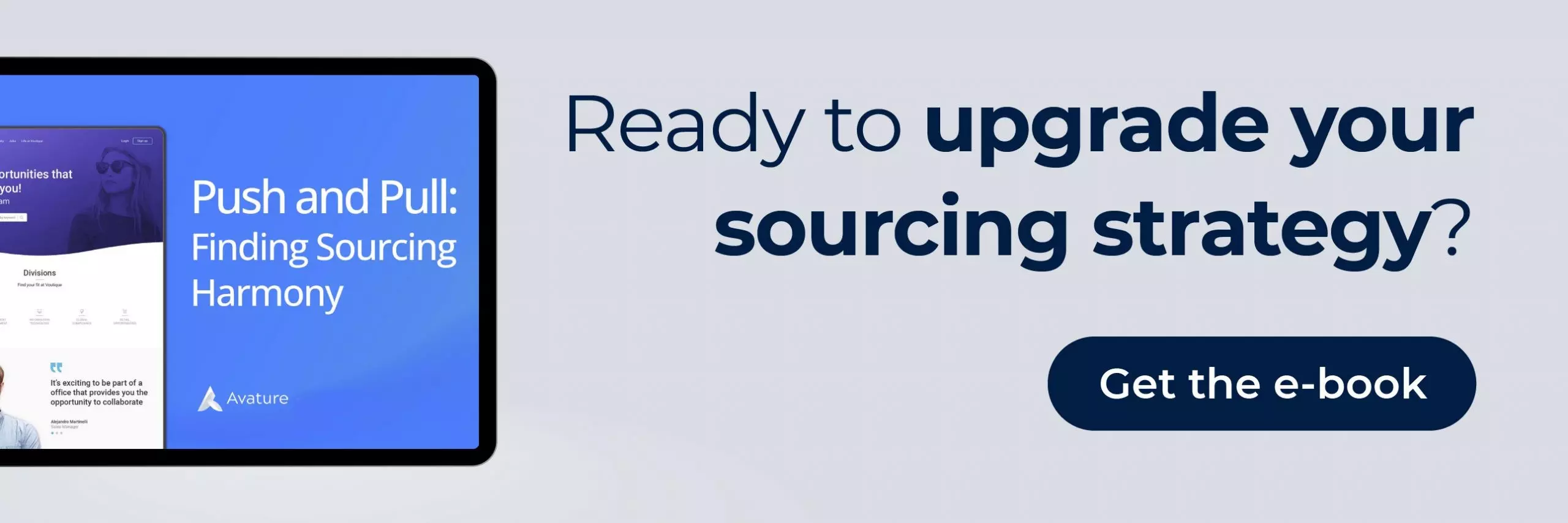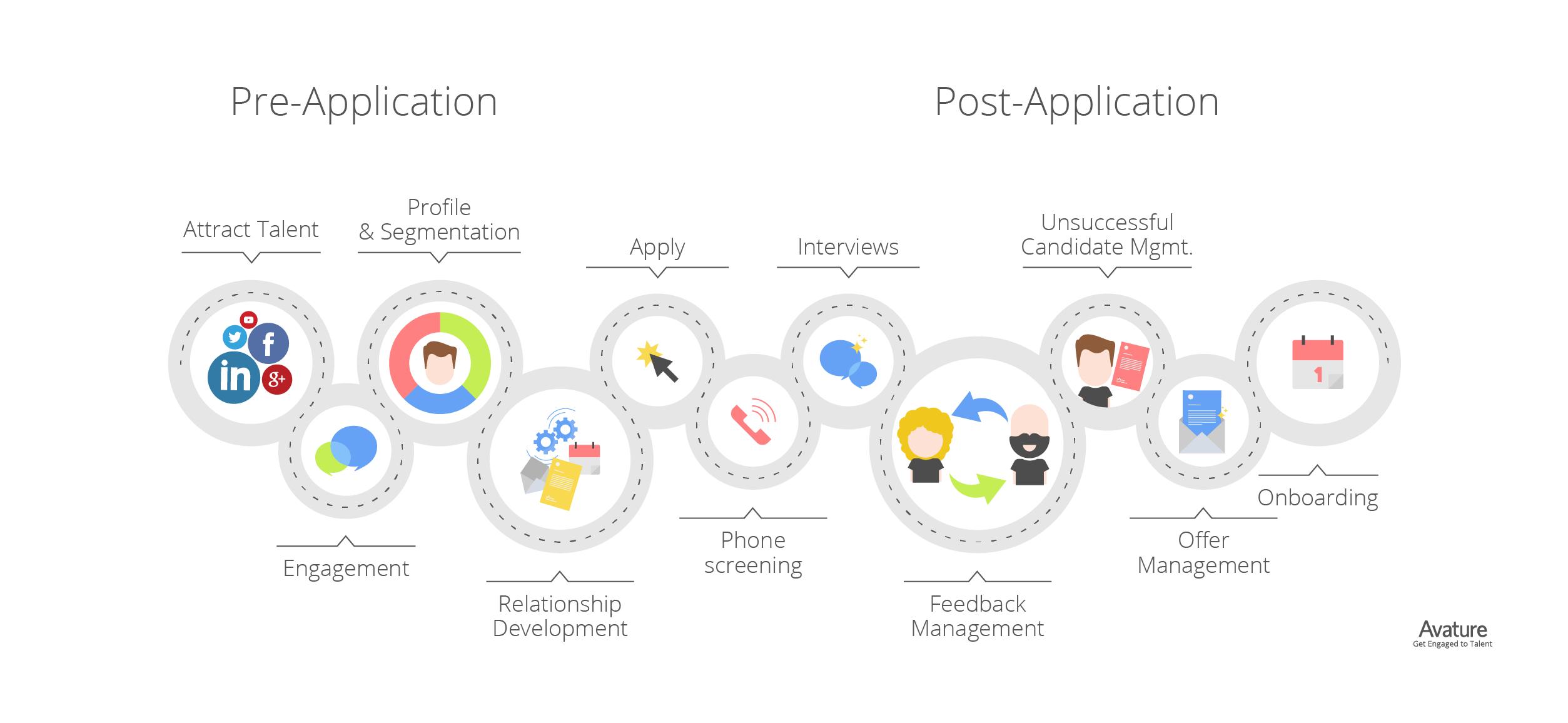Just recently, Dimitri Boylan, our CEO, and Riges Younan, our VP for APAC, co-hosted a webinar with HCI titled ‘How to Architect a New Strategic Vision for HR Based on Engagement and Service Delivery’. The content was so rich that over the coming weeks we’ll be sharing bite sized manageable pieces of information, focusing on the key points, and main opinions and ideas. This week we’ll be elaborating on how sales and marketing have redefined the recruiting model.
Part 1
Bringing the Agency In-House
Over the last 25 years, recruitment activities have changed considerably. The employment market shifted – the demand for skilled talent increased and unemployment dropped, which resulted in organizations bringing the traditional third party staffing agency in-house, and recruiting becoming a permanent part of HR.
This change created a few issues, as the agency skill set was not designed to take advantage of company resources. Leveraging brand, building meaningful relationships with hiring managers, or having a deeper understanding of how organizations work was never part of the recruiters’ day job, and they knew very little about internal dynamics. All these factors consequently caused a fractious relationship between recruiters and HR.
This also caused management to think recruiters were wild. Common issues such as ‘they don’t fill out forms, they make things up as they go along, they don’t provide us with the right information we need to do things’ were arising. So to control the recruiters’ activities and reduce internal administrative problems managers put a system in place – the first generation of applicant tracking systems. It was a system of record and control.
Marketing Becomes the New Core of Recruiting Processes
Let’s fast forward to 2016. The internal agency has evolved and is here and very real. Companies have invested in and built internal capabilities for proactive recruiting and passive candidate sourcing. The process has transformed from what was once an HR, compliance-driven process into a sales and marketing process and all the complexity that entails.
The recruiting challenge today is becoming increasingly difficult. Recruiting is now competing for mind and market share of non-employees. Organizations need to sell and differentiate themselves not only in terms of their product, but also as a place of work. This was never a traditional HR challenge — it was a sales and marketing one. “No longer is the recruiting lifecycle from applicant to hire. It’s from lead to hire”. Leads are sourced, converted into prospects, engaged over a period of time and segmented into relevant talent pools, and ultimately converted into applicants to specific jobs and, eventually, hires.
As sales and marketing form the new core of recruiting processes, today’s 2nd generation ATS systems, despite having a career site, are largely still control mechanisms for compliance with functionality going back to the 90’s. They were designed to primarily respond to a challenge that was presented 20 years ago that was to bring the agency in-house, and are not set up to deal with the complexity of sales and marketing processes”.
-Dimitri Boylan. CEO at Avature.
The Technology Solution – CRM
70-80% of recruiting happens at the top of the funnel in the pre-applicant stage – it’s sourcing, and attracting leads and prospects to consider the organization in the first place. That’s sales (sourcing) and marketing (attraction). It’s where the recruiting battle is won.
So the challenge of retooling the workforce and retraining the recruiting organization is tremendous. In order to overcome this challenge, we have seen HR organizations place a heavy focus on the candidate experience, particularly over the last 5 years. By adopting the “CRM Methodology” within their recruiting function, HR has been able to realign their thinking, processes, and technology in order to maximize their top of the funnel activities – taking lead generation, prospect engagement, relationship development, and employment branding very seriously. They have also come to realize that recruiting takes time and sales cycles can be from months to years. By focusing on the candidate experience they are changing their organization recruiting output.
Extending the Candidate Experience From Shoulder Tap to First Day
As recruiting organizations have become better at marketing, we’ve seen the creation of new actors: sourcers, researchers, employer brand ambassadors, and recruitment marketers. The result of course is that a focus on high quality passive candidate development is now becoming an established methodology inside the organisations.
However, what organizations need to realize now is that the candidate experience doesn’t end with the application/first interview. Knowing how to proactively engage talent in a competitive fashion is the first battle, but what happens post interview? Recruiting needs to create a new vision that encompasses the whole recruiting process from shoulder tap to first day, and beyond. A vision that not only involves the candidate but also looks at the internal relationships that impact the candidate experience.
The relationship of cooperation and teamwork between two important actors in this process – the hiring manager and the recruiter – is where the weakness lies today in most recruiting organizations at a strategic level. Many recruiters will tell you there is a lack of respect from the hiring manager. That lack of respect is translated in a lot of different ways: ‘They don’t get back to me, my feedback is un-actionable, they just say ‘nah, don’t like them’”. This is a fundamental issue which has a tremendous impact on the candidate relationship because the candidate sees a great website, comes in, gets touched really nicely by a marketing/sales oriented person, and then they get put into one of the most critical processes that’s going on in their life, getting a new job. Then they realize there is a disconnect, and the candidate experience goes sour.
The point here is: when you look at this next level of transformation, if you have 3 recruiters and 30 hiring managers, or if you have 200 recruiters and 5000 hiring managers, you need to have a vision and a strategy that make sure that the relationship between those people works and is managed properly.
Until next week…
Come back soon, as we’ll be covering transformation part 2, ‘service delivery and management reboots the relationship between recruiting and the business’. If you can’t wait that long, feel free to download our whitepaper on how to win at recruiting.




